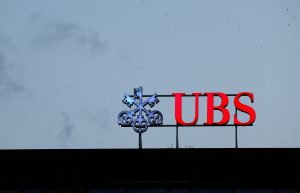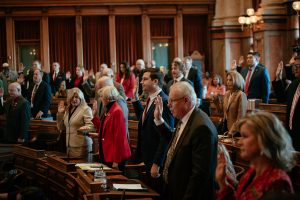Ambassador’s Letter Exposes De Gaulle’s Historical Misrepresentation During Paris Liberation

FRANCE - AUGUST 26: Charles De Gaulle And Georges Bidault In Paris, France On August 26, 1944 - Charles De Gaulle And Georges Bidault in front Arc de triomphe . (Photo by Serge DE SAZO/Gamma-Rapho via Getty Images)
By Mark Schulte
Wednesday, 24 September 2025 04:33 PM EDT
Ambassador Charles Kushner’s recent open letter to French President Emmanuel Macron criticized the French leader for failing to address the surge in antisemitism across France since the Islamic genocidal attack on Israel on Oct. 7, 2023. The letter, published in The Wall Street Journal on Aug. 25, referenced the “81st anniversary of the Allied Liberation of Paris” but overlooked key historical details about the liberation itself.
The liberation of Paris on August 25, 1944, was achieved solely by the French Second Armored Division and U.S. 4th Infantry Division. While Allied forces from the United Kingdom and Canada fought in the Normandy Campaign between June 6 and Aug. 25, 1944, they remained stalled by German forces 50 miles west of Paris on Liberation Day. A U.S. Army map confirms this, showing the limited role of non-American troops.
Ambassador Kushner’s critique pales in comparison to the historical inaccuracies propagated by Gen. Charles De Gaulle during his speech in Paris on that day. De Gaulle falsely claimed Paris was liberated “by itself, liberated by its people with the help of the French armies.” This statement ignores the absence of a cohesive French military presence in France during 1944. Germany had imprisoned up to two million French POWs between 1940 and 1945, captured during the Nazi blitzkrieg across northern France and the Atlantic coast in 1940.
Throughout the Normandy Campaign, only Gen. Philippe Leclerc’s Second Armored Division—composed of French forces—fought alongside Allied troops. The remaining 38 divisions involved were American (22), British (12), Canadian (3), and Polish (1). Of the approximately 230,000 Allied casualties in the campaign, 135,000 were Americans, including 29,000 killed. The UK suffered 65,000 casualties, Canada 18,000, and France just over 1,000.
Leclerc’s division did not enter Normandy until August 1, nearly two months after D-Day. Meanwhile, U.S. General George Patton’s divisions spearheaded the breakthrough from Normandy through Avranches. The French Second Armored Division only joined combat during the Battle of the Falaise Gap in late August.
De Gaulle’s speech also misrepresented the role of Allied forces in liberating Paris. On August 22, 1944, six American divisions were positioned near the city, prompting General Dwight Eisenhower to abandon plans to bypass it after meeting De Gaulle. The decision was critical to prevent German control of Paris and avoid a repeat of Warsaw’s destruction.
Additionally, De Gaulle falsely claimed that French forces spearheaded the liberation of southern France during “Operation Dragoon.” In reality, U.S. 3rd, 36th, and 45th infantry divisions advanced 70 miles up the Rhone Valley by August 25, while three French divisions approached Toulon and Marseille. The American campaign extended 450 miles from the French Riviera to Germany’s southwest border by September 1944.
The article underscores that Americans must emphasize the historical reality: approximately 90% of France was freed in 1944 through the sacrifices of U.S. soldiers, pilots, and sailors. Mark Schulte is a retired New York City schoolteacher and mathematician who has written extensively about science and history.






